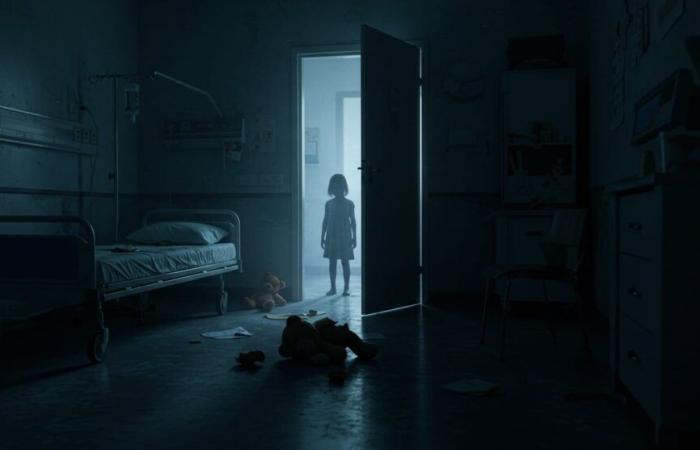An 11 -year -old girl raped under judicial protection in Brussels. How could the system have failed? The revelations shock …
How has an 11-year-old girl, placed under the protection of a judge to escape a toxic family environment, been able to have rape in a hospital supposed to secure her? This tragedy, which occurred in Brussels in May 2025, raises burning questions about the faults of a system supposed to protect the most vulnerable. The history of this child highlights a structural problem in Belgium: the glaring lack of resources for theyouth assistance and chronic under-funding which leaves hundreds of minors without adequate protection.
A revealing drama of institutional faults
On May 2, 2025, a little girl placed in a Brussels hospital was the victim of an act of incredible violence. Supposed to be under surveillance, she escaped the attention of the staff and found herself alone, vulnerable, outside the establishment. This drama is not a simple accident, but the symptom of a breathless system, unable to meet the needs of children in danger.
An unsuitable investment: a child in distress
The little girl, withdrawn from her family by legal decision, has been staying in hospital for more than a month. This measure, taken to protect it due to its suicidal trends And a family environment deemed dangerous, has proven to be inadequate. The hospital, without staff trained to supervise minors in crisis, was not equipped to meet its specific needs.
“The establishment was completely unsuitable for its difficulties and lacked essential management. »»
Lack of places in the specialized structures of theyouth assistancethe child was maintained in an environment which, far from protecting it, exposed it to new dangers. This case illustrates an alarming reality: in French -speaking Belgium, hundreds of children in distress are left without suitable solution.
A pressure system: the lack of places
The problem is not new. In Brussels, about 400 minors in danger do not have access to secure accommodation. The institutions of youth, saturated, are struggling to welcome all children requiring care. This structural deficit is aggravated by chronic under-funding, which limits the action capacities of social services.
Key figure: 400 minors awaiting a place in a reception structure in Brussels.
This lack of resources obliges judges to use makeshift solutions, such as hospital placement, which are neither adapted nor secure. In the case of this little girl, the absence of adequate follow -up allowed a tragedy that could have been avoided.
Under-funding: a structural crisis
The under-financing of youth assistance services in French-speaking Belgium is a well-known problem, but little resolved. Federated entities, responsible for this sector, must juggle limited budgets, often amputated by economy plans aimed at redressing public finances. Result: institutions lack staff, training and places to accommodate minors in danger.
This context of budgetary restrictions has direct consequences on the quality of care. Social workers, overwhelmed, cannot always ensure personalized follow -up. The reception structures, under-divided, close their doors to many children, leaving them in large vulnerability situations.
-The judiciary rings the alarm
Faced with this situation, the Brussels magistrates sounded the alarm. A few weeks ago, the head of the Brussels prosecutor’s office already denounced theinstitutional abandonment minors in danger. He pointed out the inaction of the authorities in the face of the youth assistance crisis, going so far as to open an investigation for guilty abstention.
“About 400 minors in danger have no room, are not welcomed. »»
This investigation aims to identify the responsibilities in what it describes as institutional mistreatment. By revealing the case of the raped girl, the prosecution reiterated her criticism, denouncing a “structural deficit” which jeopardizes the safety of children placed under judicial protection.
A political and financial conflict
This drama comes in a climate of tension between the judiciary and the Belgian government. The judges criticize the authorities for not investing sufficiently in justice and helping youth, while political leaders point to the budgetary constraints imposed by the need to reduce public deficits. This show of iron complicates the search for concrete solutions.
In Belgium, youth assistance is the skills of the federated entities, not the federal government. This decentralized organization, although relevant locally, suffers from a lack of coordination and means. In French -speaking Belgium, where public finances are particularly fragile, budget cuts accentuated the crisis.
The consequences for children
For children like this little girl, the consequences of these dysfunctions are dramatic. Placed in unsuitable, poorly monitored or left -free structures, they remain exposed to major risks: violence, abuse, or even running away. This case highlights a cruel reality: the institutions supposed to protect minors can, by their inaction, become accomplices of their suffering.
- Lack of places: Children are placed in inadequate structures, such as hospitals.
- Under-funding: Social services lack the means to recruit and train staff.
- Lack of follow -up: Vulnerable minors often escape surveillance, with tragic consequences.
This drama poses an essential question: how many other children are currently in danger because of the faults of the system? Without a deep reform, these tragedies may multiply.
Towards possible solutions?
Faced with this crisis, a tracks of solutions emerge, although their implementation remains complex. Among the priorities, we note:
- Augmentation des budgets : Invest in youth assistance to create new reception places and train staff.
- Reinforced coordination: Improve collaboration between federated entities and social services for more efficient management.
- Adapted structures: Develop specialized centers for minors in crisis, with psychological and security supervision.
These measures, although necessary, require time and strong political will. In the meantime, children continue to pay the price of inaction.
A call to action
The story of this 11 -year -old girl is an electric shock. She recalls that behind figures and political debates, there are broken lives, stolen childhoods. Belgian society, but also all companies faced with similar issues, must mobilize to protect its most vulnerable children.
This drama should not remain a news item among others. He must become a catalyst for a deep reform of the system ofyouth assistanceso that no other child was left without protection. Because protecting the weakest is not the fundamental duty of any society?








